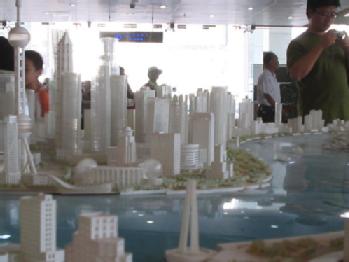ESRC Cities Network
East Asian Cities And Globalization: New Approaches
Over the past few decades cities in East Asia have experienced explosive growth. China in particular entered the 1980s as one of the least urbanized parts of the world, yet today it has five cities with populations exceeding 12 million inhabitants. Tokyo remains a key global city in the region, but other cities like Hong Kong, Shanghai, Seoul, Taipei, and Beijing have emerged as globally important centers of finance, trade, transshipment, IT services and manufacturing. There are also dramatic examples of the rise of ‘instant’ cities like Shenzhen in southern China, which grew from a small town in the late 1980s to a city of 8 million today. Moreover, dozens of medium and smaller-sized cities throughout the region are experiencing rapid population booms along with growing connectivity to regional and global economies.
Yet this growth has not been even across the region. Accounting for the uneven spread of market capitalism, information, and cultural flows across a diverse urban landscape poses a significant challenge for scholars of urban history and globalization. In East Asia, port cities and older, established political and economic capitals have been the leading edge of global economic and cultural flows. Existing studies of global cities assume a trajectory which progresses from their position as regional economic nodes, to imperial and national capitals, and onward to global status (Sassen 1991). Certain cities in East Asia, like Tokyo, seem to conform to this pattern. However, scholars increasingly question this established line of analysis. Work on the nature of development states and their relation to global cities argues that, as part of late-industrializing nations, Tokyo, Seoul and other East Asian cities do not fit into the global grid the same way North American or European cities do (Hill, R. C. and Kim, J. W. 2000). Recent work by urban historians focusing on Shanghai reveals yet another trajectory. Shanghai had enjoyed global prominence in the early 20th century, ‘lost’ that status through the 1980s and has now emerged as a ‘re-globalized’ metropolis (Wasserstom 2009). This ‘re-globalizing’ process has been experienced by other cities in East Asia as well. Historical, sociological and economic understanding of contemporary globalization thus demands analytical frameworks which recognize that key cities in East Asia had earlier, more complex interactions with global forces. Western and Japanese imperialism, for example, developed and linked many cities in the region to wider networks of trade and cultural contact. How does the history of imperialism and colonialism factor into our understanding of the process of globalization in cities today? Do former cities of the Japanese empire in East Asia enjoy certain structural or even cultural advantages as they become more globally oriented in the 21st century?
Answering such questions necessitates crossing disciplinary boundaries. If, as recent scholarship suggests, East Asian cities do not ‘fit’ neatly into trajectories of globalization and global development, then more detailed, comparative and interdisciplinary studies of East Asian cities and globalization are needed. A major methodological underpinning of the proposed network is that such work is a necessary step toward forging more apt comparisons between East Asian cities and their counterparts across the globe. Both scholars of contemporary globalization in East Asia and urban historians have noted the challenge of making such comparisons (Logan 2008, Smith, Timberlake 2002). The proposed network ‘Globalization and the City in East Asia: New Approaches’ will engage this methodological challenge by proposing a multi-step plan of investigation. To enable broader comparisons between the process of globalization in East Asian cities and their counterparts across the world, a necessary first step involves an investigation of the regional connections of cities in East Asia. Cities in the region are not only increasingly linked to global forces, but also to regional ones. Understanding the differences and similarities in how Shanghai, Tokyo and Taipei have developed in regional context can shed light on the relevance of their historical pasts to this process. Once we have a firm grasp of these regional experiences, the next step is widen the comparative net and search for those cities in Latin America, Eastern Europe and Southeast Asia, which might share similar trajectories to their East Asian counterparts.
Aims and Objectives
There is at present an unprecedented opportunity for scholars working on East Asian cities to forge meaningful international collaborations and research agendas. Chinese, Japanese, American and European colleagues increasingly reference one another’s work and are starting to approach topics like globalization with similar frames of reference (Logan 2008). Yet the structural links for these connections are still limited. ‘Globalization and the City in East Asia: New Approaches’ network draws together an international, interdisciplinary group of urban historians, human geographers and the urban planning community working in the UK, North America, China, Taiwan and Japan. This network has several key objectives. This network project, through workshops, a final conference and the building and maintenance of a virtual network will be an important structural step towards fostering long-term international collaborative research. The network’s activities will involve scholars working in several disciplines, including history, urban studies and planning, and human geography. This cross-disciplinary approach is a key methodological component to the network project. Bridging disciplines will highlight areas of commonality in our research agenda and allow us to make a significant contribution to existing scholarship. Together, these activities will introduce a new generation of early career scholars to an increasingly international and interdisciplinary field of inquiry, allowing them to frame new questions (and answers) to key questions about regional patterns of urban development in the context of globalization.

